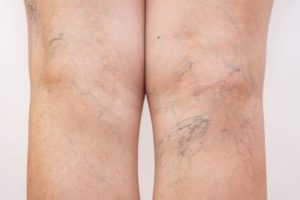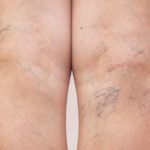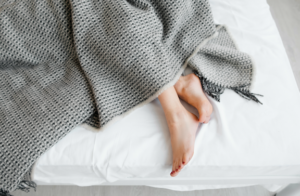 Sclerotherapy Laser Treatment is a state-of-the-art procedure intended to help eliminate unwanted painful spider veins and smaller varicose veins.
Sclerotherapy Laser Treatment is a state-of-the-art procedure intended to help eliminate unwanted painful spider veins and smaller varicose veins.
These visible veins result from damaged and broken-down valves. They form both due to age and related health and lifestyle issues. These damaged valves cause blood to flow backward causing pooling and stagnation. As the blood pools larger varicose veins can form as the vein stretches to hold the excess.
When a person with venous deficiency remains stationary for long periods of time, this can mean standing or sitting it can cause issues. Non movement can place extreme pressure on the veins in the lower legs. When varicose veins start to cause you distress, it is time to speak with a Dr. Mark Zuzga, D.O. a vein specialist at The West Florida Vein Center to discuss treatment options.
What Is Sclerotherapy?
Sclerotherapy is the most common forms of treatment when it comes to spider veins. The procedure involves injecting a salt solution directly into the damaged area. The solution irritates the lining of the vein, causing it to collapse. The lining of the now collapsing vein sticks together and the vein closes. The damaged vein then becomes scar tissue and fades away absorbing back into the body while rerouting the former blood flow.
Preparation
Before the treatment begins, Dr. Zuzga,D.O. will examine you to determine if you are a good candidate.
It is advisable to stop taking certain medications before the procedure. Avoid ibuprofen or aspirin at least 48 to 72 hours before sclerotherapy. We will advise you on which specific medications to avoid before your treatment.
Please do not apply any lotion, perfume, powder, or cologne to your legs prior to treatment. You should drink plenty of water and bring compression socks to the office to wear aftertreatment. All other clothing should be comfortable and loose fitting.
The Procedure itself
The solution is injected into the patient’s vein directly using a very fine needle. The area is numbed before the needle being inserted. You may feel some discomfort or pressure while the solution is injected into the vein. That feeling could last for one to two minutes per vein. The number of veins injected during a single procedure depends on the location and size of the veins and the general health of the patient. The entire process often takes around 15 to 30 minutes to complete.
This procedure has been performed for many decades by doctors, dermatologists, and vein specialists. The procedure is performed in-office, and most people can go back to their usual activities following the process. However, you are advised not to do any aerobic or other strenuous exercises a few days after treatment.
Some patients experience side effects after treatment, such as itching, which may last for a few days. You may also experience redness or bruising at the injection site that should go away a few days after the procedure.
We Serve the Tampa Bay and Safety Harbor areas of Florida!
Ready to change your life?
Vein surgery can be life changing for many people and a huge boost of confidence. If you are ready to feel better and look your best we would love to see you in our office for a consultation. www.westfloridaveincenter.com 727-712-3233 to schedule with Dr. Mark Zuzga, D.O,


 When you try and lay down at night to fall asleep do your legs start moving and twitching involuntarily? This is what is known as Restless Leg Syndrome. It can range from uncomfortable to incredibly annoying, even painful and lead to insomnia, which in turn can bring about other lack of sleep related health problems.
When you try and lay down at night to fall asleep do your legs start moving and twitching involuntarily? This is what is known as Restless Leg Syndrome. It can range from uncomfortable to incredibly annoying, even painful and lead to insomnia, which in turn can bring about other lack of sleep related health problems.